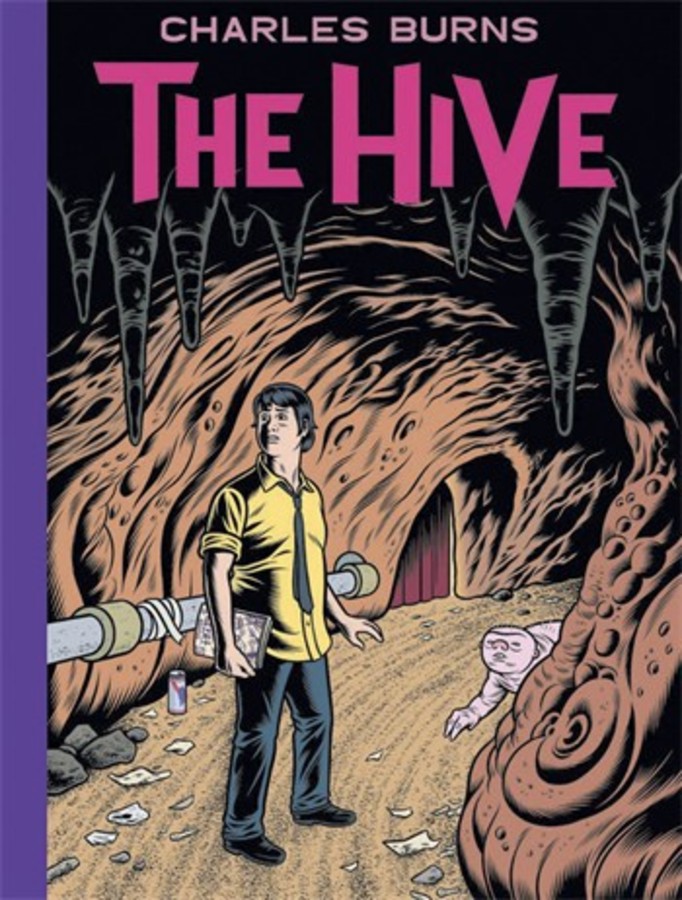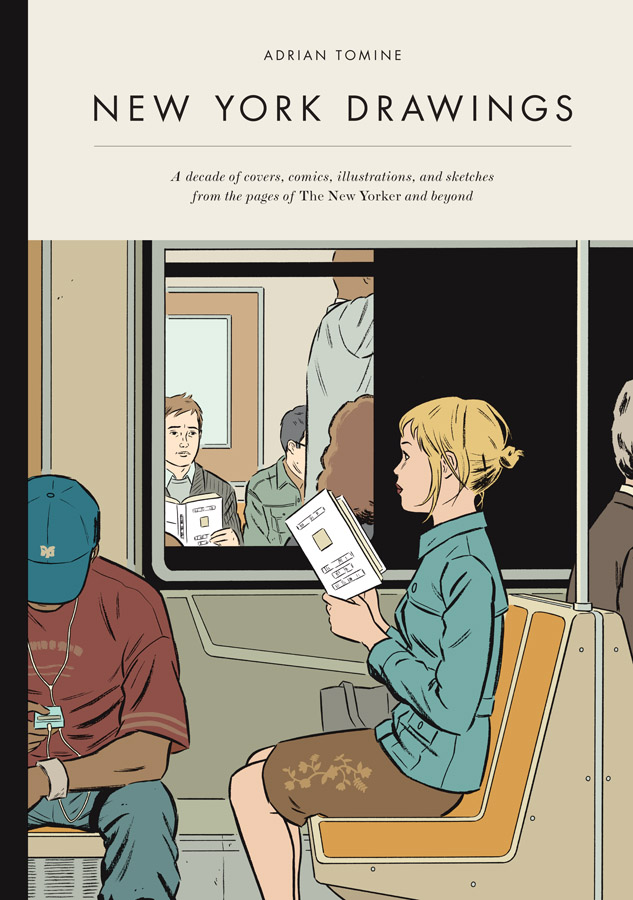
Each week, Paste reviews the most intriguing comic books, graphic novels, graphic memoirs and other illustrated books.

The Hive
by Charles Burns
Pantheon, 2012
Rating: 8.9
I’m not going to tell you that you can’t read The Hive, Charles Burns’s second in a trilogy of shorter comics volumes that began with X’ed Out two years ago, without having read its predecessor. In fact, it may almost be a better place to start than at the beginning because of the disorientation that results from doing so. Where X’ed Out set up its drifting between dream and reality in a more conventional fashion, beginning in our world and setting up clear visual and thematic echoes between it and the realm of the unconscious, The Hive is more unsettling. The first quarter works like nesting dolls of fantasy, adding both dreamworld comics and their “real world” counterparts to the mix, and as you’re jerked among the narratives, you can’t find your footing, an experience both nauseating and somewhat pleasurable. Burns seems to be exploring a theme about the function of visual fantasy, but it’s never obvious. He’s always been a genius at bringing out the gross side of the uncanny as he’s focused on the desires our superegos do their best to quash—a Stephen King who says the horror is in us, not outside us, and more horrifying for that—and this series is no exception. It will provoke both attraction and revulsion, often within the same panel, as well as a deeply felt sadness veering into depression, “the bad thing” David Foster Wallace wrote of. Intelligent, carefully crafted and emphatically not for everyone. (HB)

New York Drawings
by Adrian Tomine
Drawn + Quarterly, 2012
Rating: 7.6
More endearing than many of Tomine’s earlier works, this volume from Drawn + Quarterly collects his illustrations, many made for the New Yorker and all focusing on the city to which he moved about seven years ago. Informative but not overly rich notes in the back provide context for many but not all of the images, which reproduce beautifully and more than make up a nice portfolio. There are a few multi-panel strips in here, some of which are quite lovely, warmer and more vulnerable than I tend to think of Tomine as being. The one in which he circulates at the magazine’s holiday party, endlessly asking if people know where the coat check is to give himself a purpose, is glumly amusing. In some ways, it’s as if Tomine is turning into a Harvey Pekar who can draw, a professional complainer who manages to entertain as he bitches. A whole book of this attitude might get old, though, which is why it’s nice to have his drawings of Bob Pollard, Batman (drawn for Chip Kidd) and others in greater numbers. His sketches of people around New York are perhaps the greatest pleasure, far less polished than his finished work but more relatable because of it. The book’s not going to convert anyone, but it’s a good record of work that otherwise might have been merely ephemeral. (HB)

Avengers Vs. X-Men #0 – 12
by Various
Marvel, 2012
Rating: 4.0
The term “by committee” has gradually become a death wish for quality in any creative space. Projects damned by this process tend to emerge from the marketing department, which uses numbers and brand equity as a skeleton for artificial story developments whose roles are secondary at best. By design, it’s an awful, inorganic way to build properties where a team of many dilutes the vision capable of one. For Marvel, its Avengers Vs. X-Men maxi-series falls victim to the worst of these trends. Five writers, four artists and two warring superhero teams with an accumulative roster of 40 does not a consistent story make. But hey, the idea of its two most popular creations beating the shit out of each other can’t be bad, right?
The plot follows a giant cosmic power-up called the Phoenix Force that turns a few X-Men into omniscient gods with disco makeovers. As the earth’s conservative line of do-good protectors, Captain America and the Avengers take offense at the commune of ultra-hippies who use their celestial flames to erase things like war and hunger. No joke. Giving credit where credit is due, the event transcends its reptile-brain premise by offering a few story twists to complicate matters. The fact that these developments are largely hollow does little to give this arc any impact, though.
Before we look at the dorky particulars, a giant SPOILER ALERT from here on out. The most jarring outcome of this battle comes when a power-drunk Cyclops incinerates his former mentor Charles Xavier. While his historical significance can’t be overemphasized, Xavier hasn’t had a prominent role in the Marvel Universe since Joss Whedon wrote him out of leadership in the “Dangerous” arc of Astonishing X-Men, let alone in this event. Allowing a semi-retired figurehead to die for some prescribed turning point is a cheap and irrelevant move. Equally lame, the final payoff is that the exorcised Phoenix Force allows mutants to propagate again, reversing a curse from former heroine-turned-villainess Scarlet Witch. The mystical particulars of mutant witches and intergalactic hellfire might be lost on me, but I have no clue how this math makes more mutants overnight. If they’d included a global intercom blaring Barry White, this development might have made more sense.
These faults are all the more regrettable, as issue nine is one of the best mainstream superhero comics of this year. In 19 pages, writer Jason Aaron beautifully distills the character of Spider-Man by pitting him against insane odds. Jokes and heartbreak abound. It’s a clear counter-point to what this series lacked: humanity. It seems that Marvel was so concerned with its marquee, market-share hook that logic and characterization were afterthoughts. As its main competition at DC raised the stakes with its relaunch and parent company Marvel is no doubt looking for its publishing division to capitalize on its film success, we can only hope that Marvel avoids these lame pyrotechnics and returns to the characters it has spent the last fifty years honing. (SE)